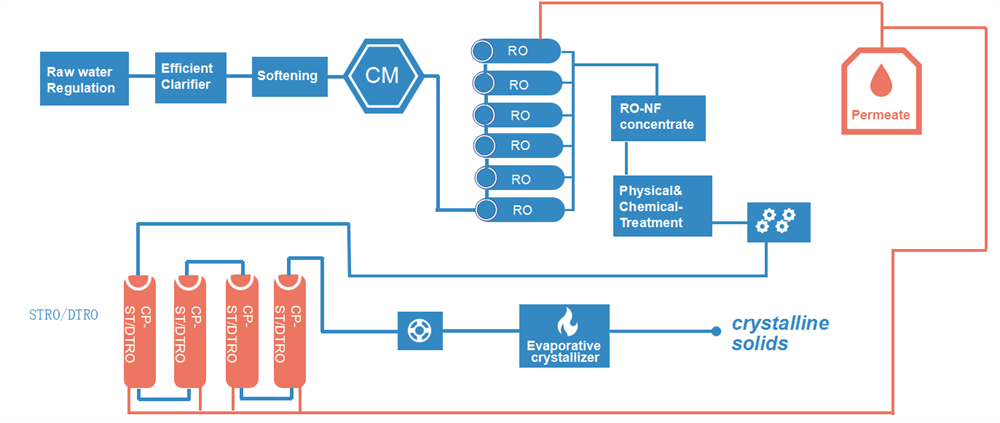





Mine wastewater mainly consists of surface infiltration water, rock pore water, pit water, underground aquifer drainage water, and dust production, grouting and filling sewage in underground mines. The concentrating plant and coal washing plant sewage are the main mine wastewater. source
Usually, the pH of the mine water is between 7 and 8, which is weakly alkaline. However, the sulfur-containing mine water has more SO42-, mostly acidic water. In sulfur-bearing mines, sulfide minerals are contained in ore or surrounding rock and sulfur-bearing coal. These minerals are oxidized, decomposed and dissolved in the mine water to form acidic water. Especially in the mining roadway, under the large infiltration of groundwater and good ventilation conditions, it provides an extremely favorable environment for the oxidation and decomposition of sulfide minerals.
According to statistics, if the use of recycled water is not considered, the discharge of wastewater per ton of ore is about 1 m3; the production of 1 ton of raw coal is about 0.5 to 10 m3 from the underground, generally 3 m3.
Mine water pollution can be divided into mineral pollution, organic pollution and bacterial pollution. Mineral pollution includes sand, mud particles, mineral impurities, dust, dissolved salts, acids and alkalis; organic pollutants are oxidative decomposition products of coal particles, oils, biological life metabolites, wood and other substances. As well as the pollution of powder ore, coal powder, rock powder and associated minerals scattered during mining and transportation, the water body is grayish black, turbid, and the oil surface floats with oil film, and emits a small amount of odor and oily smell. The results of water quality analysis and test, chemical oxygen consumption is large, the total number of bacteria and coliform bacteria are large. If it is not treated, it will be discharged for a long time, which will have certain adverse effects on the environment.
|
parameter |
unit |
Influent water quality |
|
PH |
- |
7.0-9.0 |
|
TDS |
mg/l |
17800 |
|
COD |
mg/l |
55~85 |
|
BOD |
mg/l |
15-30 |
|
Na+ |
mg/l |
150~200 |
|
Cl- |
mg/l |
30~90 |
|
TSS |
mg/l |
80~200 |
|
HCO3- |
mg/l |
100~1200 |
|
K+ |
mg/l |
11~16 |
|
Mg²﹢ |
mg/l |
10~40 |
|
SO4²- |
mg/l |
150-2000 |
|
Ca²﹢ |
mg/l |
70-100 |
|
JD |
mmol/L |
100~500 |
|
CO3²- |
mg/l |
50~400 |
